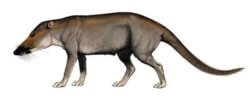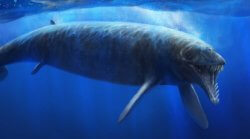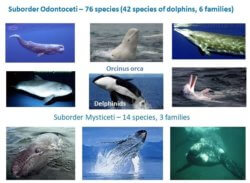The evolution of orca brains, starting 50 million years ago
The question: How did this land animal with hooves, who was related to what are today cows and deer …

… develop into this large and formidable character with big teeth and a small brain …

… and then into a modern orca with small teeth and a large and extraordinarily complex brain …

… along with all her relatives?

That was the question Dr. Lori Marino posed – and then answered – at the Whale Museum on San Juan Island at the end of a recent week of town meetings around Washington State.
The town meetings were to explain the why’s and wherefore’s of a seaside sanctuary for captive orcas, along with possible locations in the San Juan Islands for the sanctuary (which we’ll outline in an upcoming post). But this particular talk was less about the work of the Whale Sanctuary Project and more about her favorite topic: the evolution of orcas and other cetaceans, along with what we know about their remarkable brains and how, in many measures of brain development, they exceed the capacity of the human brain.
As a neuroscientist whose specialty is the study of the brains of cetaceans (whales and dolphins), one of the discoveries of Dr. Marino and her colleagues is the fact that while we humans (and most other mammals) have one primary auditory center in the brain, cetaceans have TWO.
So, what exactly does this second auditory circuit do?? We don’t fully know, but the fact that they have two completely separate pathways to the brain’s cortex shows that they are doing something very complex with sound processing.
It was a fascinating talk, delivered to a packed house at the Whale Museum. And we think you’ll enjoy watching it.